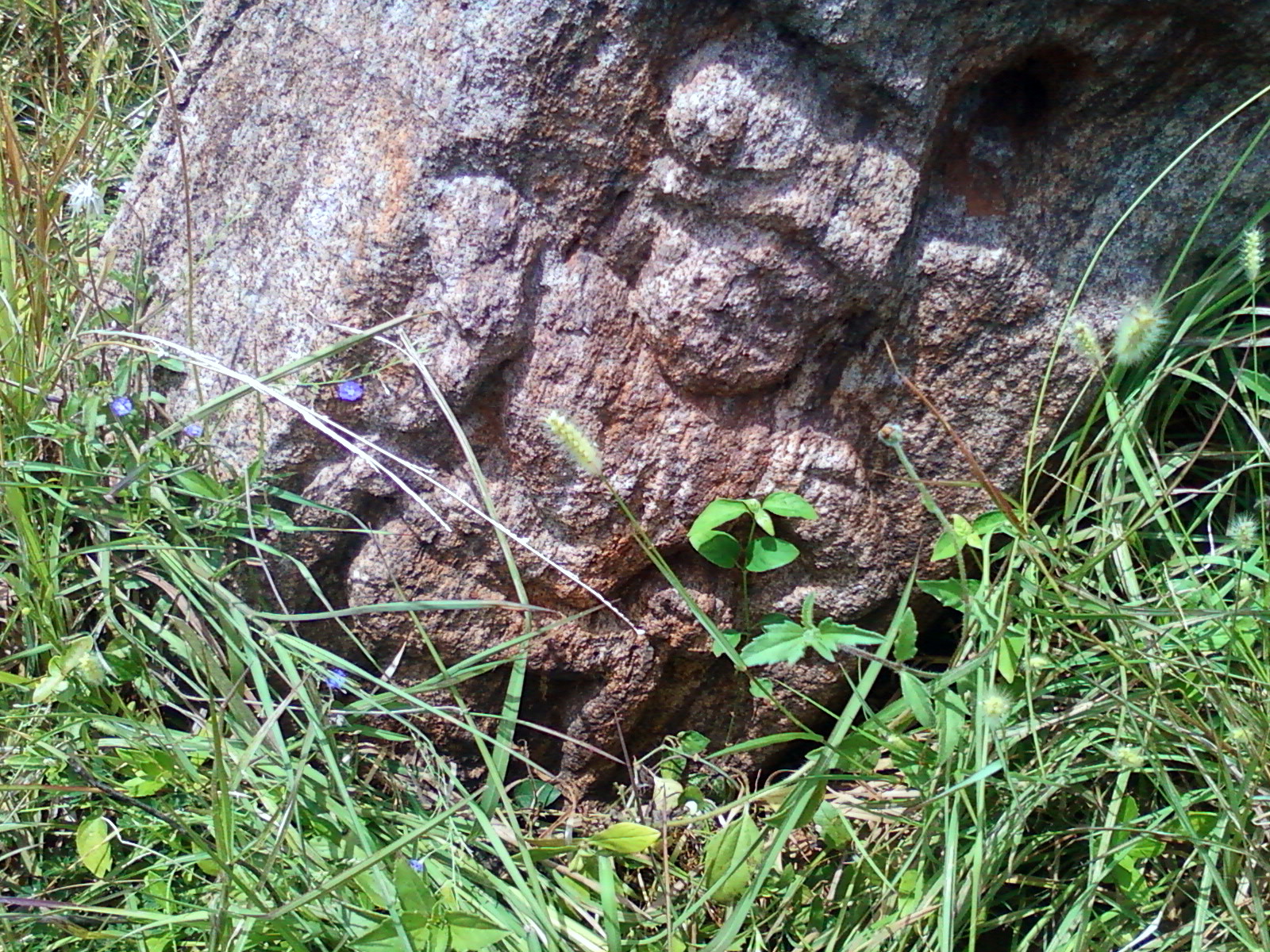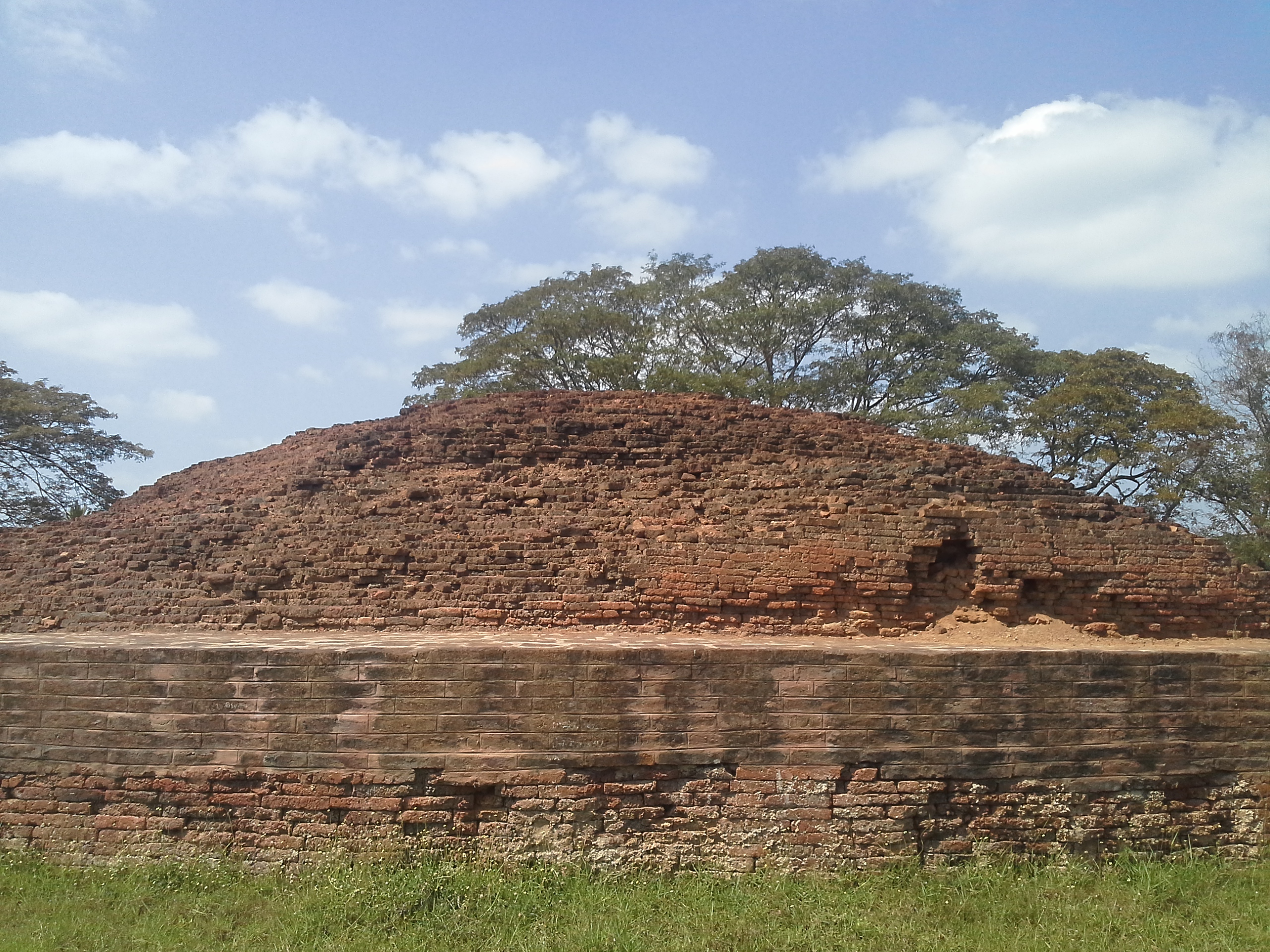|
Simhachalam
Sri Varaha Lakshmi Narasimha temple, Simhachalam, is a Hindu temple situated on the Simhachalam Hill Range,which is 300 metres above the sea level in the city of Visakhapatnam, Andhra Pradesh, India. It is dedicated to Vishnu, Lord Vishnu, who is worshipped there as Varaha Narasimha. As per the temple's legend, Vishnu manifested in this form (lion's head and human body) after saving his devotee Prahlada from a murder attempt by the latter's father Hiranyakashipu. Except on Akshaya Tritiya, the idol of Varaha Narasimha is covered with sandalwood paste throughout the year, which makes it resemble a linga. The temple was built in Kalingan architecture styles and stands unique in the historical region of Kalinga (historical region), Kalinga. The present temple was built by Eastern Ganga dynasty king Narasingha Deva I in the 13th century and consecrated by his son Bhanudeva I in 1268 CE. The temple was built by Akthayi Senapati, on the command of Narasingha Deva I. Legends assoc ... [...More Info...] [...Related Items...] OR: [Wikipedia] [Google] [Baidu] |
Simhachalam Hill Range
The Simhachala Hill Range, with the anglicised name Simhachalam Hills, are a towering mountain range (377 m) in the city of Visakhapatnam, in Andhra Pradesh state, southern India. It is one of the hill ranges in Andhra Pradesh and in the Eastern Ghats. Geography The Simhachalam Hills form part of the eastern ranges of the Eastern Ghats system. These hills cover an area of 32 km. History The Simhachalm Hill Range has a lot of rich history. The famous Varaha Lakshmi Narasimha temple is located here. The Chalukya period Radha Madhava Swamy temple and some old Buddhist monuments are also found here. Devotional The hills house many temples including the Varaha Lakshmi Narasimha temple and other smaller ones; every year a festival is held called the ''Giri Pradakshina,'' where Hindu devotees walk 35 km around the hill. About The neighborhoods of Visakhapatnam city situated near the hill range are Adavivaram, Akkayyapalem, Balayya Sastri Layout, Gopalapatnam, Hanumanth ... [...More Info...] [...Related Items...] OR: [Wikipedia] [Google] [Baidu] |
Visakhapatnam
Visakhapatnam (; List of renamed places in India, formerly known as Vizagapatam, and also referred to as Vizag, Visakha, and Waltair) is the largest and most populous metropolitan city in the States and union territories of India, Indian state of Andhra Pradesh. It is between the Eastern Ghats and the coast of the Bay of Bengal. It is the second largest city on the Coastal India, east coast of India after Chennai, and the fourth largest in South India. It is one of the four Smart city, smart cities of Andhra Pradesh selected under the Smart Cities Mission and is the headquarters of Visakhapatnam district. Vizag is popularly known as ''shipbuilding capital of India'' due to presence of multiple shipyards such as Hindustan Shipyard, Naval Dockyard (Visakhapatnam), Naval Dockyard and being the central naval command of the east coast. Visakhapatnam's history dates back to the 6th century BCE. The city was ruled by the Satavahana dynasty, Andhra Satavahanas, Vengi, the Pallava dyna ... [...More Info...] [...Related Items...] OR: [Wikipedia] [Google] [Baidu] |
Narasingha Deva I
Gajapati Langula Narasingha Deva I was an Eastern Ganga monarch and a warrior of the Kalinga region who reigned from 1238 CE to 1264 CE. He defeated the Muslim forces of Bengal who constantly threatened the Eastern Ganga dynasty's rule over his kingdom of Kalinga from the times of his father Anangabhima Deva III. He was the first king from Kalinga and one of the few rulers in India who took the offensive against the Islamic expansion over India by muslim invaders of Eastern India. His father had successfully defended his kingdom against the muslim rulers of Bengal and crossed into Rarh, Gauda and Varendra in Bengal chasing the invaders on backfoot. He became the dominant ruler of the peninsula by defeating the muslims, Gouda, and the powerful monarch of the south kakatiya Dynasty king Ganapati Deva, and was one of the most powerful Hindu rulers in India. He also built the Konark temple to commemorate his victories over the Muslims as well as other temples and the largest f ... [...More Info...] [...Related Items...] OR: [Wikipedia] [Google] [Baidu] |
Eastern Ganga Dynasty
The Eastern Ganga dynasty (also known as Purba Gangas, Rudhi Gangas or Prachya Gangas) were a large medieval era Indian royal Hindu dynasty that reigned from Kalinga from as early as the 5th century to the mid 20th century. Eastern Gangas ruled much of the modern region of Odisha in three different phases by the passage of time, known as Early Eastern Gangas (493–1077), Imperial Eastern Gangas (1077–1436) and Khemundi Gangas (1436–1947). They are known as "Eastern Gangas" to distinguish them from the Western Gangas who ruled over Karnataka. The territory ruled by the dynasty consisted of the whole of the modern-day Indian state of Odisha, as well as major parts of north Andhra Pradesh, parts of Chhattisgarh and some southern districts of West Bengal. Odia language got official status in their regime following the evolution of the language from Odra Prakrit. The early rulers of the dynasty ruled from Dantapuram; the capital was later moved to Kalinganagara (modern Muk ... [...More Info...] [...Related Items...] OR: [Wikipedia] [Google] [Baidu] |
Sthala Purana
A sthala purana or sthala puranam () refers to a religious account that recounts the historical significance of a Hindu temple, or the sacredness of the region in which it is situated. It is sometimes referred to as a eulogistic work that glorifies a sacred site. The name of a given place and the temple present in a sthala purana traditionally has a religious or a historical association, with some major event surrounding it. Etymology Sthala Purana comes from the Sanskrit terms ''Sthala'', meaning, 'place', and ''Purana'', meaning, 'history'. A Sthala Purana serves to offer information regarding the events associated with a given place, which is usually a temple. Description Sthala Puranas were historically transmitted orally, traditionally by the Pujari, priests of a Hindu temple, who would recount the account during Puja (Hinduism), puja. They were also sometimes preserved in manuscripts, usually included in works of religious literature. In the contemporary period, these ... [...More Info...] [...Related Items...] OR: [Wikipedia] [Google] [Baidu] |
Visakhapatnam District
Visakhapatnam district is one of the six districts in the Uttarandhra region of the Indian state of Andhra Pradesh, headquartered at Visakhapatnam. It is one of the twenty-six districts in Andhra Pradesh state. The district shares borders within the north and east, Vizianagaram district and South Anakapalli district in the south-west and Bay of Bengal in the south. History During the British rule in India, Visakhapatnam emerged as a district in the year 1802. Chicacole (present-day Srikakulam) which was in Visakhapatnam district was incorporated into Ganjam when the latter was formed as a district. On 1 April 1936, Bihar and Orissa Province was split to form Bihar Province and Orissa Province. Parts of the Vizagapatam district (i.e., Nabarangpur, Malkangiri, Koraput, Jeypore, Rayagada etc.) and the Ganjam district (excluding Chicacole division) of Madras Presidency were transferred to Orissa Province along with portions of the Vizagapatam Hill Tracts Agency and Gan ... [...More Info...] [...Related Items...] OR: [Wikipedia] [Google] [Baidu] |
Narasimha
Narasimha (, , or , ), is the fourth avatara of the Hindu god Vishnu in the Satya Yuga. He incarnated as a part-lion, part-man and killed Hiranyakashipu, ended religious persecution and calamity on earth, and restored dharma. Narasimha has three eyes, and is the God of Destruction in Vaishnavism; He who destroys the entire universe through (Pralaya). Hence, He is known as Kāla, Kala (time), Mahakala (great-time), or Parakala (beyond time) in His names. There exists a matha (monastery) dedicated to Him by the name of Parakala Matha at Mysore, Mysuru in the Sri Vaishnavism, Sri Vaishnava tradition. There is also Ahobila mutt another srivaishnava matha that primarily worships Narasimha. The most famous kshetra for Narasimha is Ahobilam with the Lakshmi Narasimha and Nava Narasimha. Ahobilam is considered foremost Narasimha temple, easily being number 1 Narasimha shrine in the world. Narasimha is the God of Yoga, as Yoga-Narasimha. Narasimha has a human torso and lower body, with ... [...More Info...] [...Related Items...] OR: [Wikipedia] [Google] [Baidu] |
Andhra Pradesh
Andhra Pradesh (ISO 15919, ISO: , , AP) is a States and union territories of India, state on the East Coast of India, east coast of southern India. It is the List of states and union territories of India by area, seventh-largest state and the List of states and union territories of India by population, tenth-most populous in the country. Telugu language, Telugu is the most widely spoken language in the state, as well as its official language. Amaravati is the state capital, while the largest city is Visakhapatnam. Andhra Pradesh shares borders with Odisha to the northeast, Chhattisgarh to the north, Karnataka to the southwest, Tamil Nadu to the south, Telangana to northwest and the Bay of Bengal to the east. It has the Coastline of Andhra Pradesh, third-longest coastline in India at about . Archaeological evidence indicates that Andhra Pradesh has been continuously inhabited for over 247,000 years, from early archaic Hominini, hominins to Neolithic settlements. The earliest r ... [...More Info...] [...Related Items...] OR: [Wikipedia] [Google] [Baidu] |
Ashok Gajapathi Raju
Pusapati Ashok Gajapathi Raju (born 26 June 1951) is an Indian politician and the former Union Minister for Civil Aviation in the Narendra Modi Government. A scion of royal family of Vizianagaram princely state, he is the younger son of the last Maharaja of Vizianagaram. He was a member of Andhra Pradesh State legislature for over twenty five years and was a Minister in the Govt. of A.P., for thirteen years holding the portfolios of Commercial Tax, Excise, Legislative affairs, Finance, Planning and Revenue. Personal life Pusapati Ashok Gajapathi Raju comes from the Pusapati royal family of the Vizianagaram estate. He is the son of Maharaja Pusapati Vijayarama Gajapathi Raju, the last Maharaja of Vizianagram. His family is known for its philanthropy through its temples that include the famous Simhachalam temple and the Maharaja Alak Narayana Society for Arts and Sciences which runs a number of education institutions. He was educated at Scindia School Gwalior, Hyderabad Publ ... [...More Info...] [...Related Items...] OR: [Wikipedia] [Google] [Baidu] |
Prahlada
Prahlada () is an asura king in Hindu scriptures. He is known for his staunch devotion to the preserver deity, Vishnu. He appears in the narrative of Narasimha, the lion avatara of Vishnu, who rescues Prahlada by disimboweling and killing his evil father, the asura king Hiranyakashipu. Prahlada is described as a saintly boy, known for his innocence and bhakti towards Vishnu. Despite the abusive nature of his father, Hiranyakashipu, and his uncle and aunt, Hiranyaksha and Holika, he continues to worship Vishnu, and Vishnu as Varaha kills his paternal uncle Hiranyaksha by piercing and crushing him, and Vishnu kills his paternal aunt Holika by burning her to ashes alive, and Vishnu as Narasimha disimbowels and kills his father Hiranyakashipu and saves Prahlada and the universe from destruction and chaos. He is considered a ''mahājana'', or great devotee, by followers of Vaishnava traditions. A treatise is attributed to him in the Bhagavata Purana, in which Prahlada describes t ... [...More Info...] [...Related Items...] OR: [Wikipedia] [Google] [Baidu] |





